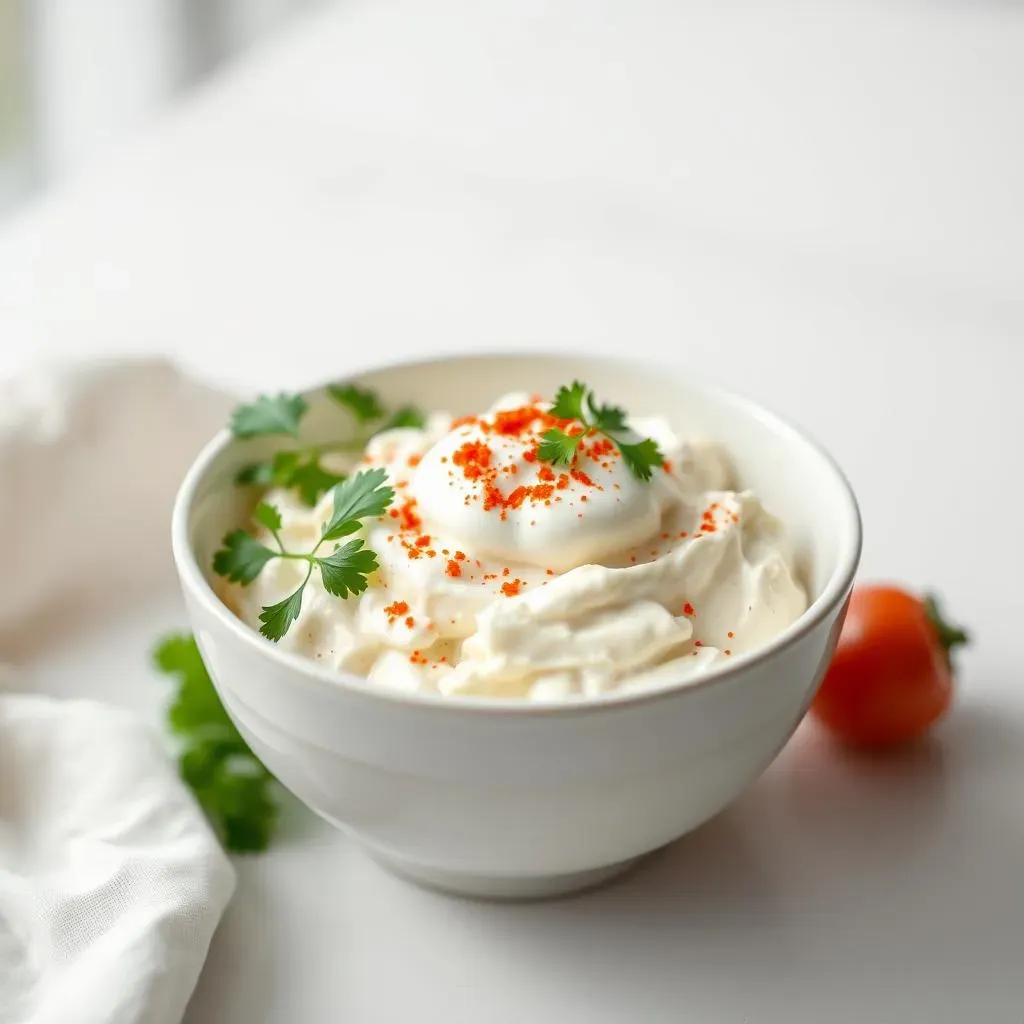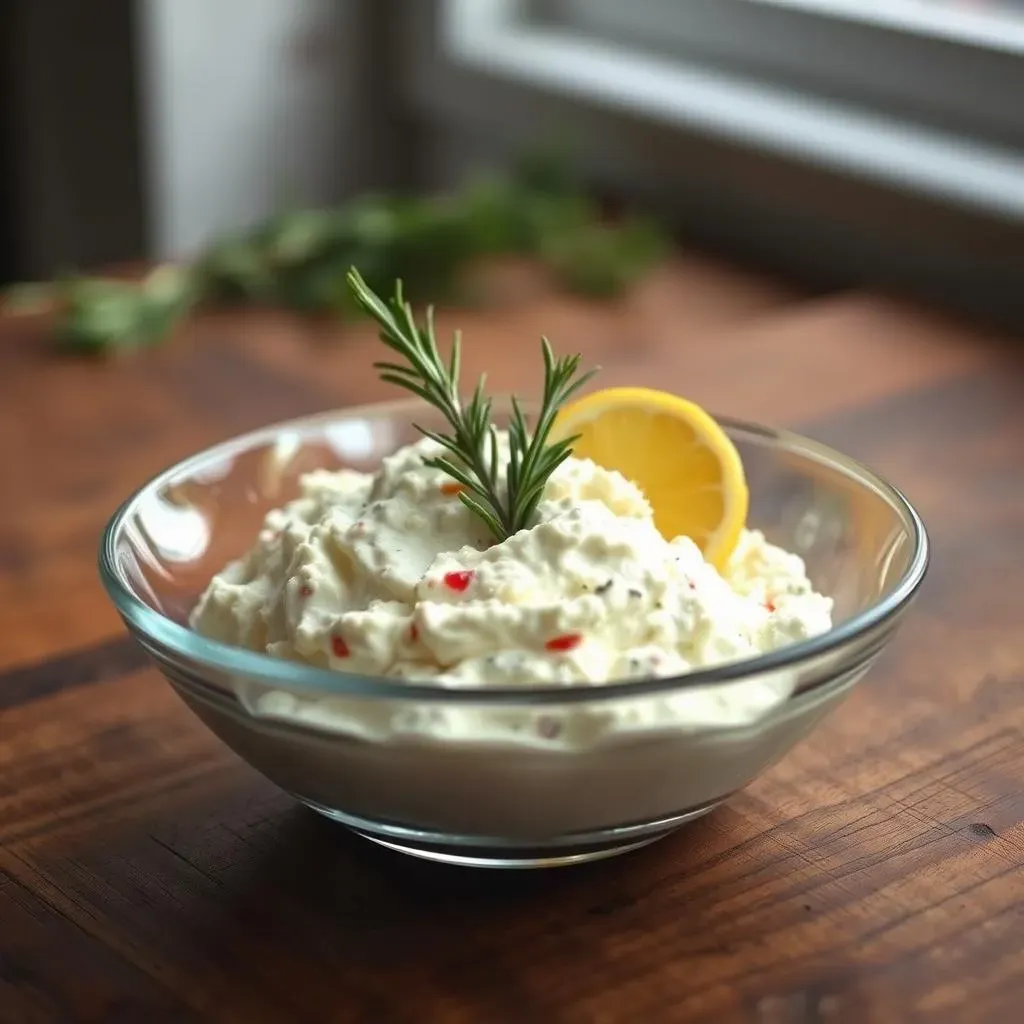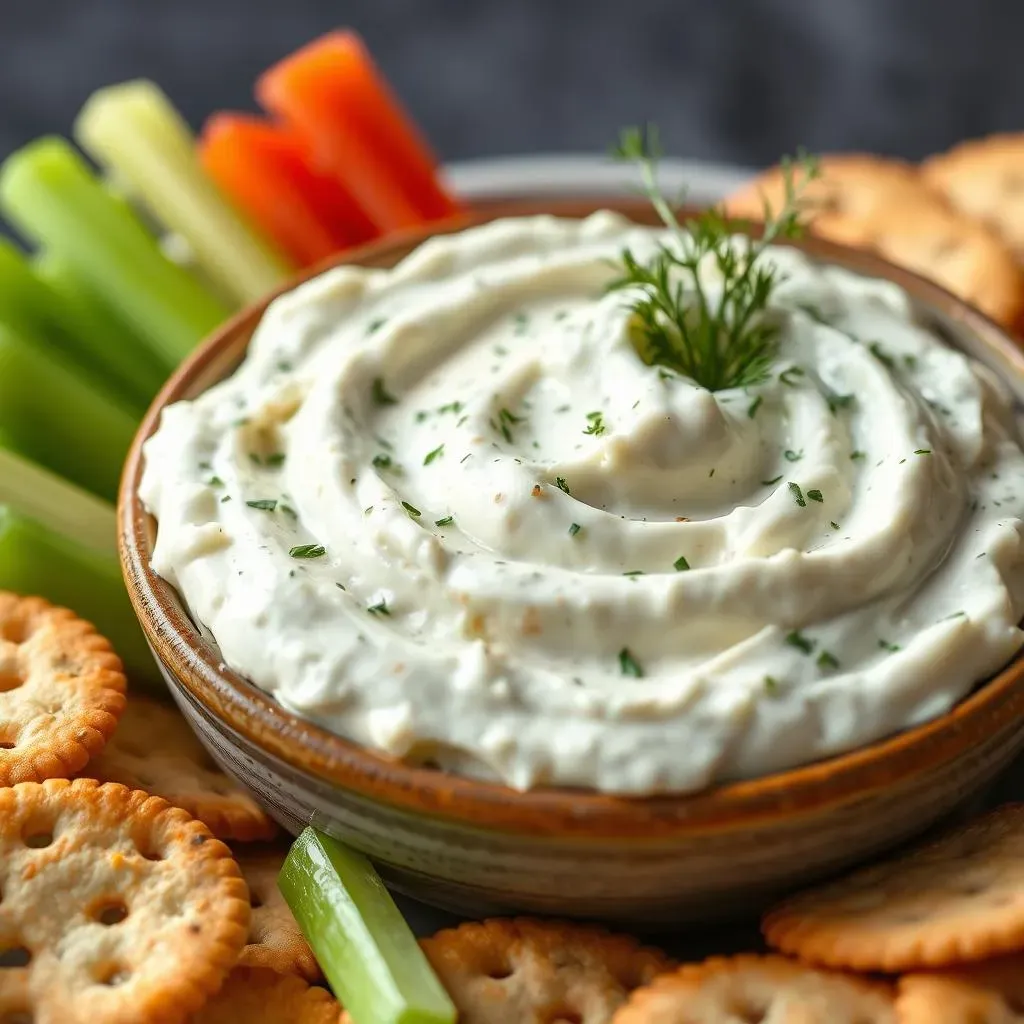Table of Contents
Ever found yourself staring into the fridge, sour cream missing, and a recipe calling your name? You’re not alone. Many of us have faced this creamy conundrum. But what if I told you a simple, often overlooked hero is waiting in the wings? Yes, I'm talking about cottage cheese. The question isn't just “can you use it?” but “is cottage cheese a good substitute for sour cream?” In this article, we’ll explore this very topic, seeing how this chunky wonder can step in when sour cream’s not around. We’ll look at how to make the swap, what to expect in terms of taste and texture, and even some real-world examples. We'll also share tips and tricks to make sure your dishes don’t miss a beat. Get ready to be surprised, because this might just change your kitchen game. Let's get into it and see if cottage cheese can truly fill those sour cream shoes.
Cottage Cheese: A Surprising Standin for Sour Cream

Cottage Cheese: A Surprising Standin for Sour Cream
The Underdog of the Dairy Aisle
Okay, let's be real. Cottage cheese doesn't exactly scream "party in your mouth," does it? It's often relegated to the "diet food" corner, which is a shame. But, I'm here to tell you, that this humble cheese is a secret weapon. It's like that quiet kid in class who turns out to be a genius. When it comes to replacing sour cream, cottage cheese has a lot to offer. It’s got that creamy texture, a mild tang, and it’s packed with protein, which is always a win. Think of it as sour cream's more nutritious, less pretentious cousin. It might not be the first thing you reach for, but trust me, it's worth getting to know.
The great thing is that you don't need a fancy culinary degree to make this work. It’s all about knowing how to tweak it a little to get that perfect sour cream vibe. I mean, who knew that this stuff, often seen as a bit bland, could be such a versatile player in the kitchen? I certainly didn't when I first started experimenting. I was shocked the first time I used it in a dip, and honestly, I haven't looked back. It's time to give cottage cheese the respect it deserves.
Why It Works
So, why does this substitution actually work? It's not just about being creamy; it's about the science of it. Both cottage cheese and sour cream have a certain tanginess, though sour cream is definitely more pronounced. That slight tang in cottage cheese comes from lactic acid, the same thing that gives sour cream its signature taste. The texture is where we need to do a bit of work. Cottage cheese is, well, chunky. But, a quick whizz in a blender or food processor can transform it into a smooth, creamy base that mimics sour cream's consistency. It’s like magic, but the kind you can do in your kitchen. And let's not forget the protein boost – you're essentially sneaking in a bit more goodness into your meals without sacrificing flavor.
Also, let’s talk about fat content for a second. Sour cream is higher in fat than cottage cheese, which contributes to its richness. If you’re looking to cut back on fat but still want that creamy texture, cottage cheese is a stellar option. You can adjust the richness by adding a touch of milk or cream, if needed. But most of the time, I find that blended cottage cheese is just right. It’s a simple swap that can make a big difference, not just in your recipes but also in your overall diet. It’s a win-win, really.
Feature | Sour Cream | Cottage Cheese |
|---|---|---|
Texture | Smooth, thick | Chunky, curds |
Tanginess | Pronounced | Mild |
Fat Content | Higher | Lower |
Protein | Moderate | High |
How to Use Cottage Cheese as a Sour Cream Substitute

How to Use Cottage Cheese as a Sour Cream Substitute
The Blending Basics
Alright, so you're ready to ditch the sour cream and go cottage cheese. Awesome! First things first: you gotta get rid of those curds. The key here is a good blender or food processor. I mean, nobody wants chunky dip, right? Just toss your cottage cheese in and blend until it’s smooth and creamy. You'll be surprised how quickly it transforms. If it seems a bit too thick, add a tablespoon of milk or water at a time until it reaches the consistency you're after. Think of it like making a smoothie, but instead of fruit, you're aiming for a sour cream-like base. It's not rocket science, but it's a game-changer.
Now, the type of cottage cheese you use matters. Small curd cottage cheese tends to blend smoother than large curd, so keep that in mind when you're shopping. But honestly, either will work with a little extra blending. And don't worry about the flavor, it's surprisingly neutral once blended. You might want to add a squeeze of lemon juice or a dash of vinegar to enhance that tanginess, if you want. It's all about customizing it to your taste. I usually start with a teaspoon of lemon juice per cup of cottage cheese and adjust from there. It’s like a little science experiment in your kitchen, and the best part is that you get to eat the results!
Adjusting for Taste and Texture
Okay, so you've got your smooth, creamy cottage cheese. Now, let's talk about fine-tuning. One of the main differences between cottage cheese and sour cream is the tang. While cottage cheese has a mild tang, it's not as pronounced as sour cream. To get that extra zing, you can add a bit of acid. Lemon juice, white vinegar, or even a little bit of lime juice can do the trick. Start with small amounts and taste as you go. It's like adding spices to a dish; you can always add more, but you can't take it away. Also, if you're using the substitute in a hot dish, remember that it might thin out a bit as it heats up. So, you might want to start with a thicker consistency than you'd use for a cold dip.
Texture-wise, cottage cheese can be a bit lighter than sour cream. If you’re looking for that extra richness, a touch of cream or even a bit of Greek yogurt can help thicken it up. It’s like building a flavor profile, layer by layer. I usually add a tablespoon of cream at a time, mixing it well, until I get the desired consistency. You can also use a bit of cornstarch to thicken it, but be careful not to add too much, or it can get a little gloopy. The goal here is to create a substitute that’s not just similar but actually makes your dish taste even better. It's all about experimenting and finding what works best for you and your recipe.
Adjustment | Purpose | How to |
|---|---|---|
Lemon juice or vinegar | Enhance tanginess | Add 1 tsp per cup, adjust to taste |
Milk or water | Thin consistency | Add 1 tbsp at a time, blend |
Cream or Greek yogurt | Add richness and thickness | Add 1 tbsp at a time, mix well |
Cornstarch | Thicken the mix | Add 1/2 tsp at a time, mix well |
Is Cottage Cheese a Good Substitute For Sour Cream: Recipes and Tips

Is Cottage Cheese a Good Substitute For Sour Cream: Recipes and Tips
Dips and Spreads: A Cottage Cheese Dream
Okay, let’s get to the fun part: putting this cottage cheese swap to work. Dips and spreads are where this substitution really shines. Think about it – creamy, tangy, and perfect for veggies, chips, or crackers. Instead of reaching for sour cream, blend up some cottage cheese until it’s silky smooth. Then, add your favorite seasonings. I love a classic dill dip with garlic powder, onion powder, and fresh dill. Or, how about a spicy chipotle dip with a touch of lime? The possibilities are endless. The beauty here is that cottage cheese takes on flavors so well, it's like a blank canvas for your culinary imagination. It’s also a great way to sneak in some extra protein at your next party – your guests will never know!
I've personally used blended cottage cheese in everything from spinach artichoke dip (game changer!) to a creamy ranch dressing. In the spinach artichoke dip, I swapped out half the sour cream for blended cottage cheese, and nobody even noticed. It still had that rich, creamy texture, but with a little less fat. For ranch, I blend cottage cheese with buttermilk, garlic, onion, dill, and a touch of lemon juice – it’s way better than any store-bought version. And, the best part? It's so simple to make. No fancy ingredients, no complicated steps – just good, wholesome flavor that’s ready in minutes. Trust me, once you start using cottage cheese in your dips and spreads, you'll never look back.
Baking and Beyond: Unexpected Uses
Now, you might be thinking, "Okay, dips are cool, but what about baking?" Well, hold on to your hats because cottage cheese is surprisingly versatile in the oven, too. While it's not a straight 1:1 swap for sour cream in every baking recipe, it can absolutely work wonders with some adjustments. For example, in muffins or cakes, you can replace half the sour cream with blended cottage cheese. It adds moisture and a subtle tang that enhances the overall flavor. I’ve also used it in cheesecakes to lighten them up without sacrificing that creamy texture. It’s all about experimenting and seeing what works best for your recipe. The key is to not be afraid to play around and tweak things until you get the result you want.
Beyond baking, blended cottage cheese can also be used in sauces and soups to add creaminess and body. I often use it in place of cream in pasta sauces for a lighter option. It adds a richness without making the sauce feel heavy. And, if you're a fan of creamy soups, try adding a dollop of blended cottage cheese at the end for extra creaminess and protein. It’s like a secret ingredient that elevates your dishes without adding extra fat. So, next time you're looking for a way to add creaminess to your cooking, don't forget about the humble cottage cheese. It might just be the hero your recipe needs.
Recipe Type | How to Use Cottage Cheese | Tips |
|---|---|---|
Dips | Blend until smooth, add seasonings | Start with a small amount of seasoning, taste as you go |
Spreads | Blend until smooth, mix with herbs and spices | Add a squeeze of lemon juice for extra tang |
Baking | Replace half the sour cream with blended cottage cheese | Adjust liquid amounts as needed |
Sauces and soups | Add a dollop of blended cottage cheese at the end | Mix well for a smooth consistency |